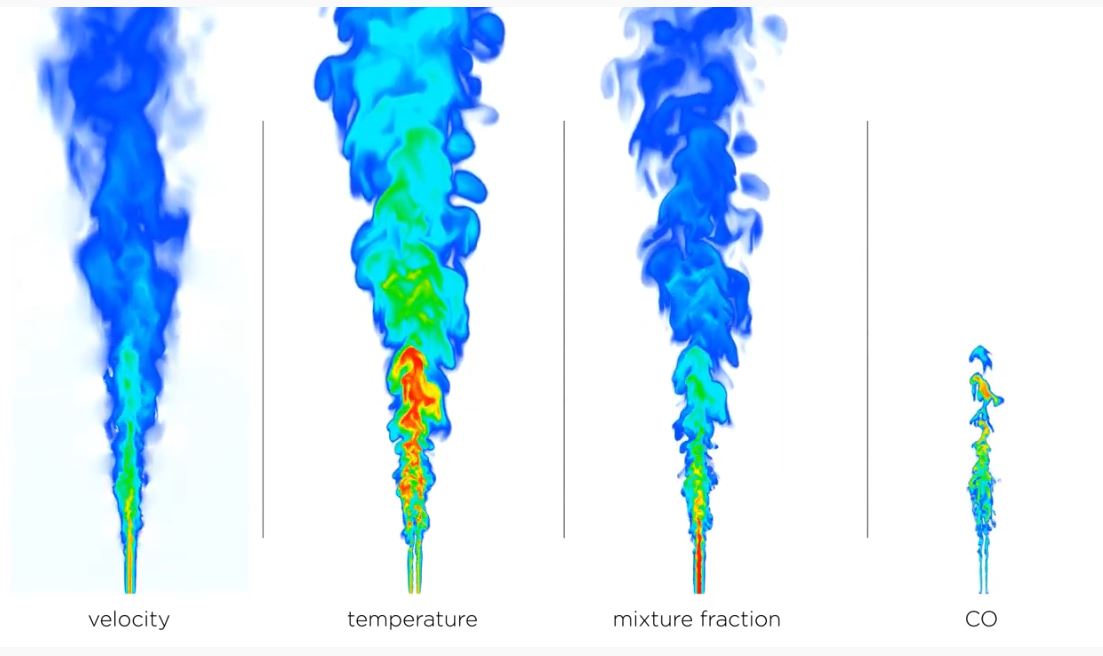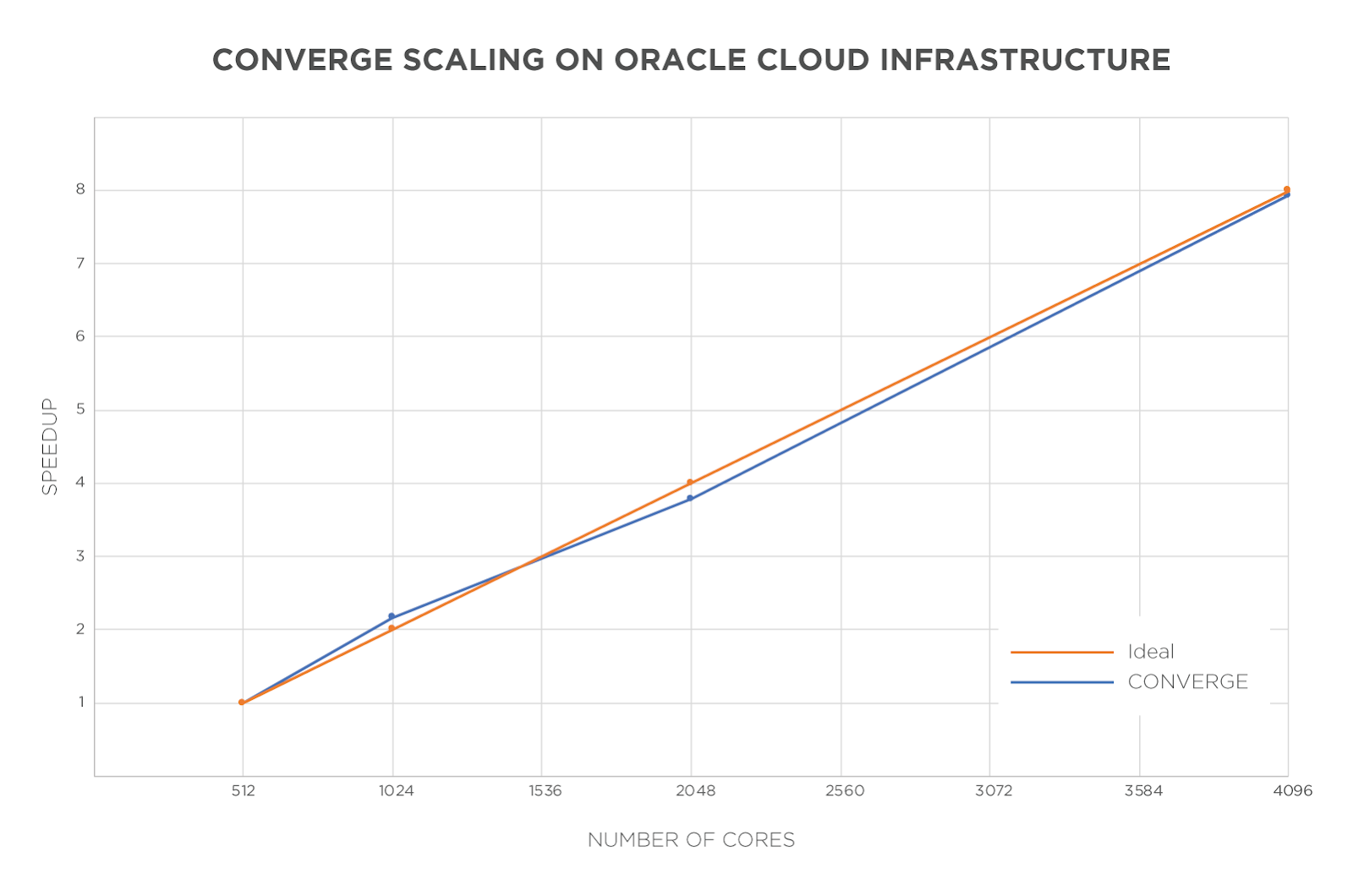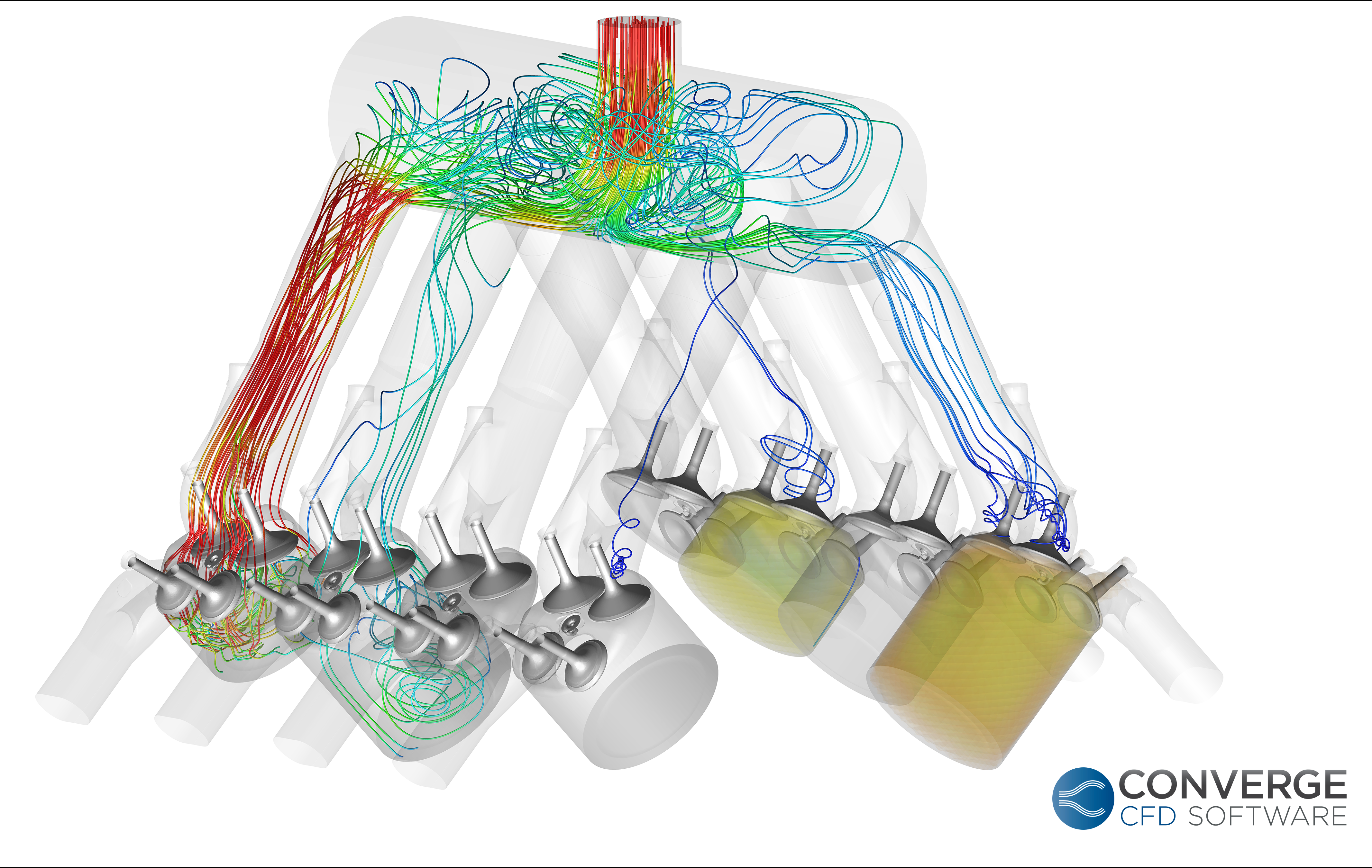Whether you’re designing internal combustion engines, gas turbines, or pumps, understanding the behavior of fluids is critical to creating an effective machine. However, predicting fluid behavior is not a simple matter. You have to account for complex physical phenomena, chemical interactions, and the often-complicated moving geometries of your device. Computational fluid dynamics (CFD) simulations provide insight into these intricate systems, and we can use that knowledge to analyze and optimize our designs.
Running Computational Fluid Dynamics Simulations on Oracle Cloud Infrastructure
Running high-fidelity CFD simulations requires a significant amount of computational power, but establishing and maintaining the necessary hardware is expensive and not always feasible. Oracle Cloud Infrastructure offers a convenient solution by providing on-demand access to high-performance computing (HPC) resources. Convergent Science has formed a relationship with Oracle enabling customers to run large-scale CFD simulations on modern HPC architectures in the Oracle cloud.
Convergent Science, based in Madison, Wisconsin, develops and supports CONVERGE CFD software, a leading general-purpose CFD solver used by engineers around the globe. CONVERGE eliminates all user meshing time through its fully autonomous meshing and features a suite of advanced physical models, a fully coupled detailed chemistry solver, and the ability to accommodate complex moving geometries. The latest major release of the software, CONVERGE 3.0, is designed to take advantage of modern HPC architectures to run massively parallel simulations.
“We’re excited to collaborate with Oracle to offer our customers CONVERGE on Oracle Cloud Infrastructure,” says Dr. Kelly Senecal, Owner and Vice President of Convergent Science. “With Oracle Cloud Infrastructure’s bare metal HPC shapes and low latency remote direct memory access (RDMA) networking, we were able to get excellent scaling for CONVERGE.”
Benchmark Testing
Oracle and Convergent Science worked together to validate the performance of CONVERGE on Oracle Cloud Infrastructure specific shapes. Oracle Cloud Infrastructure provides RDMA-enabled cluster networking and bare metal HPC instances. Oracle Cloud Infrastructure now combines its proven HPC instance with a low-latency network that can span more than 20,000 cores. The compute shape has 36 cores from two 3.7GHz Intel Xeon Gold 6154 processors, 384-GB RAM, and 6.4-TB NVME local storage. Using powerful NVIDIA GPUs available on Oracle Cloud Infrastructure, customers can post-process their results on the cloud through remote visualization.
 CONVERGE 3.0 simulation of Sandia Flame D flow benchmark test
CONVERGE 3.0 simulation of Sandia Flame D flow benchmark test
Figure 1 shows the scaling results of CONVERGE on Oracle Cloud Infrastructure for a simulation of Sandia Flame D, a combusting turbulent partially premixed flame. The simulation domain contained 170 million cells, and the core count varied from 512 to 4,000. CONVERGE scales extremely well on Oracle Cloud Infrastructure, demonstrating near perfect scaling up to 4,000 cores.

Figure 1: CONVERGE 3.0 scaling on Oracle Cloud Infrastructure for a combusting turbulent partially premixed flame (Sandia Flame D) simulation.

CONVERGE 3.0 simulation of flow and combustion in a multi-cylinder spark-ignition engine.
Oracle and Convergent Science also ran a benchmark for a gasoline port fuel injection (PFI) engine case. The simulation ran for a full engine cycle, including intake, compression, expansion, and exhaust. This simulation used detailed chemistry, combustion modeling, and key CONVERGE features, such as adaptive zoning and adaptive mesh refinement (AMR). The cell count varied from 450,000 to 1.3 million over the course of the simulation. Even when using computationally intensive features, CONVERGE 3.0 scales well. With 500 cores, you can run a full engine cycle in under three hours!
Running CONVERGE on Oracle Cloud Infrastructure’s HPC resources can significantly speed up your simulations and open the door to studies that might otherwise prove too computationally expensive. Examples include running massive gas turbine cases with hundreds of millions of cells, resolving small gaps in a compressor using a highly refined mesh, simulating many engine cycles to study cycle-to-cycle variation, or resolving flame structures with LES.
Through this collaboration, Oracle and Convergent Science continue to work together to optimize CONVERGE on Oracle Cloud Infrastructure and provide a seamless HPC solution for your CFD simulation needs.
Want to Know More?
Refer to the CONVERGE runbook for step-by-step instructions on how to configure and run CONVERGE on Oracle Cloud Infrastructure.
Visit CONVERGE CFD Software or contact Convergent Science to learn more about CONVERGE.
